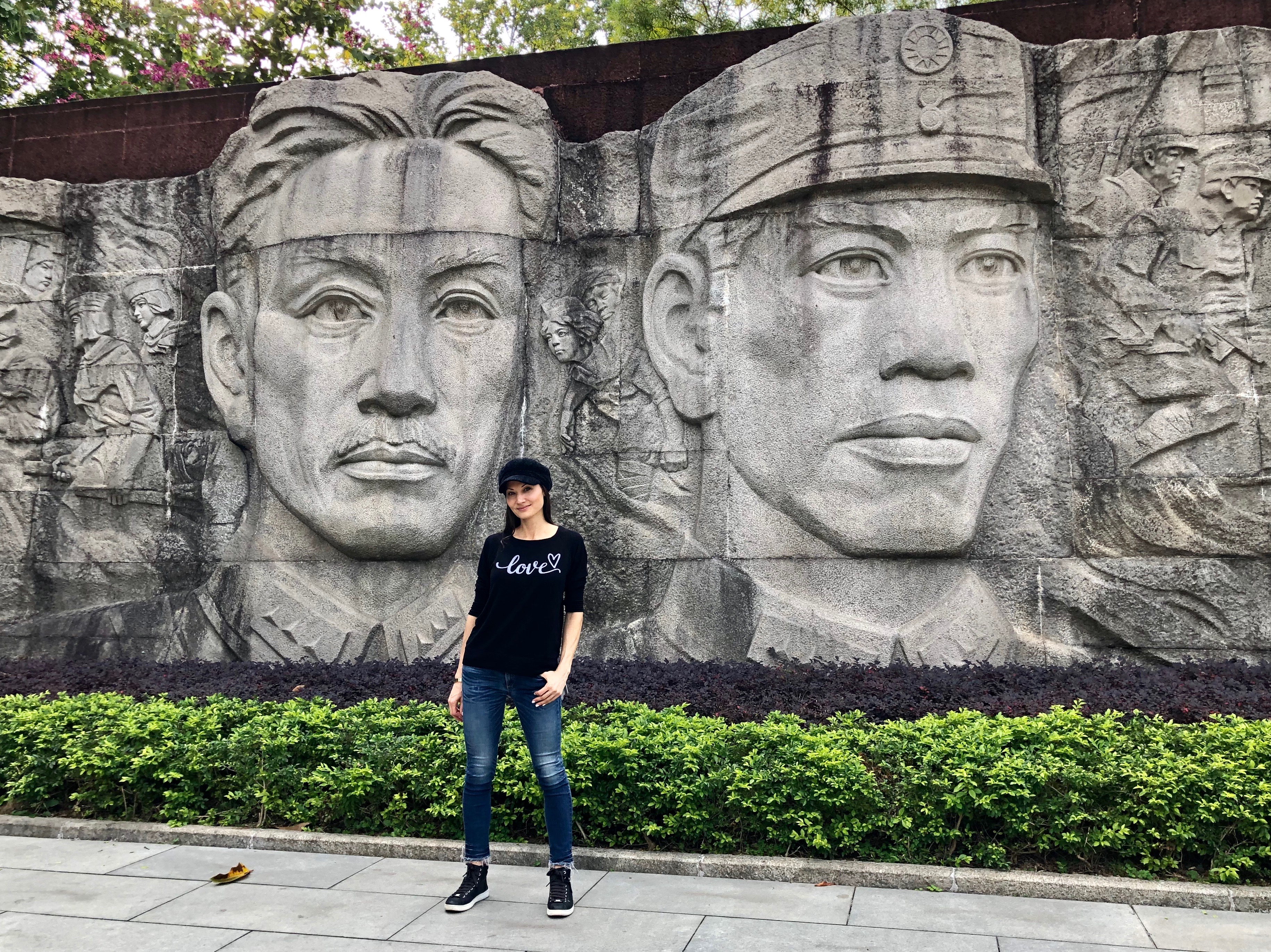As a child, I was told by my mom, “Your great-grandfather was a general who fought the Japanese in World War II. There are books written about him and one battle in particular made him a national hero. His house – where your pau pau (grandmother) lived – was turned into a museum.” My glib response as a kid, “That’s really cool mom, we should visit it one day.”
Well, that day finally came last December when our whole family who live in the U.S. and China was invited by the Chinese government to celebrate my great-grandfather, General Jiang Guangnai,’s 130th anniversary of his birth.
Little did I know that this trip would make me feel so connected, honored and proud to carry part of this man’s DNA who remains relevant and revered decades after his death in 1967. In China, I learned how my family is interwoven into Chinese history through my great-grandfather, Jiang Guangnai, and his life:
My great-grandfather, Jiang Guangnai, was born in 1888. He was the son of a scholar, and grandson to one of the top scholars in China. His grandfather placed second on the national exams, beating millions of others for one of the highly coveted, top three spots. This academic achievement led him on a path to educating one of the Qing Dynasty emperors. While academics would have been the expected path for Jiang Guangnai, instead he chose a military path (which, at that time, his father thought was the smarter choice). Early in his career, Jiang Guangnai was head of Sun Yat Sen’s security detail before becoming the General of the 19th Route Infantry Army. The battle between the Japanese and Chinese on January 28, 1932 catapulted him to become a national hero as he led a successful defense of Shanghai. Days before the battle, he was given strict orders by Chiang Kai-shek to surrender, but instead, Jiang Guangnai refused to back down. Some say he had a rebel heart, others say he simply loved his country and his people so much that he could not bring himself to succumb to Chiang Kai-shek’s orders. For weeks and without the monetary support from Chiang Kai-shek, Jiang Guangnai’s army held off the Japanese, prompting the local people to come to the army’s aid with home-cooked meals and warm clothes (it’s very cold in Shanghai in the winter). While the battle took place nearly 90 years ago, students still study the strategy behind the historic fight today.
First Stop: Humen is a small town between Hong Kong and Guangzhou where Jiang Guangnai was born. His house remains empty and a bronze bust of him sits in the front entry. In this house-turned-museum, there are pictures and information about his life displayed on the walls (one picture includes my mom sitting on my pau pau’s lap). The government is currently building a permanent museum next door with a modern look.
After walking through his three-story home where my pau pau grew up, we walked up a hill behind his house to a tomb that he commissioned to build out of respect for his parents. We paid respects by bowing beneath it.


Second Stop: Guangzhou, also known as Canton, is a province in Southern China near Hong Kong (it’s about a two hour train ride, unless you take a high-speed train which cuts travel time in half between the two cities).
It is in this city where Jiang Guangnai has a school named after him in his honor and a park dedicated to him and the 19th Infantry Army which he led during the war. His tomb was moved from Beijing to the park monument back in the 1990s and every year on January 28th (the date of the historic battle), people go to the park to pay their respects and celebrate my great grandfather.
School Visit: Jiang Guangnai Ji Nian Xiao Xue, Guangzhou
After working as a General in the army, Jiang Guangnai became the governor of Fujian Provence. He also became a philanthropist, donating money to hospitals and schools. He supported science, sports and arts and, in 2011, the Chinese government named a school after him. We visited the elementary school – Jiang Guangnai Ji Nian Xiao Xue – and watched students perform dances and songs in honor of him and our family. The performances were moving and I was overwhelmed with emotion when the children sang songs in his name.

19th Infantry Monument (standing with my cousins Alex, Jack, Sandy and my brother, Cory)
I could not be more proud to carry part of this man’s DNA. Knowing that I come from a bloodline that is pretty badass – he is described in books as a kind, generous, and extremely smart man – fills me with joy, honor and drive to spread inspiration just like he did and continues to do today. If I have one ounce of his intelligence, boldness and heart… I’m doing okay… no… I’m actually doing better than just okay.











